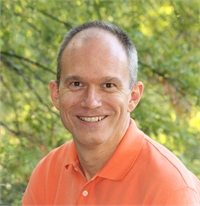Abstract: The semiconductor laser was first demonstrated in 1962 by four independent laboratories (2 groups at General Electric, IBM, and MIT Lincoln Laboratory) within the span of a few months. These initial devices were simple homojunction devices (GaAs and GaAsP) operating at cryogenic temperatures under pulsed-current conditions and producing microwatts of power. During the past 50 years, semiconductor lasers have gone through dramatic changes and performance improvements due to advances in materials (alloys, heterostructures, quantum wells, quantum dots), novel device and cavity designs and fabrication (distributed-grating feedback, surface emitting structures, coherently coupled arrays, quantum-cascade gain, large-mode cavities, nano-cavities), and the need for different emission characteristics (high-speed modulation, tunability, mode-locked pulses, single frequency, high power, low noise). The combination of function adaptability, wavelength flexibility, compact size, and performance have enabled semiconductor lasers to become ubiquitous in a variety of commercial and government applications including optical storage (CDs and DVDs), fiber-optic communications and computer interconnects, remote sensing, atomic optical clocks, pumping of solid-state gain media, and manufacturing including direct-diode cutting and welding of metal. In this talk, we will provide tutorial information on semiconductor lasers and optical amplifiers, review some of the major breakthroughs that have occurred over the last 50 years, and describe a few recent research and commercial results.
Biography: Paul W. Juodawlkis is Assistant Leader of the Electro-Optic Materials and Devices Group at the Lincoln Laboratory, Massachusetts Institute of Technology (MIT), where he is leading research on semiconductor optoelectronic devices, integrated photonics, and microwave photonics. His research efforts have focused on the development of optical sampling techniques for photonic analog-to-digital converters (ADCs), quantum-well electrorefractive modulators, high-power waveguide photodiodes, and high-power semiconductor optical amplifiers (SOAs) and their application in mode-locked lasers and narrow-linewidth external-cavity lasers. Dr. Juodawlkis received the B.S. degree from Michigan Technological University, Houghton, the M.S. degree from Purdue University, West Lafayette, IN, and the Ph.D. degree from the Georgia Institute of Technology, Atlanta, all in electrical engineering. Prior to his research and leadership activities in the Electro-Optic Materials and Devices Group (1999-present), he served as a radar systems engineer on a multi-sensor airborne testbed program at the Lincoln Laboratory (1988-1993), and as a member of the Ultrafast Optical Communications Laboratory (UFOCL) at Georgia Tech (1993-1999) where he investigated the ultrafast optical nonlinearities of low-temperature grown quantum-well materials and optical packet-switch architectures.
Dr. Juodawlkis has authored or co-authored over 100 peer-reviewed journal and conference publications. He was the General Co-Chair of the 2012 Conference on Lasers and Electro-Optics (CLEO) and Program Co-Chair of the 2010 CLEO. He is currently an elected member of the IEEE Photonics Society Board of Governors (2011-2013). He has served as Chair of the IEEE Photonics Society Technical Committee on Microwave Photonics (2003-2006), Program Co-Chair of the 2003 Photonics Society Summer Topical Meeting on Photonic Time/Frequency Measurement and Control, and committee member of the International Topical Meeting on Microwave Photonics (2004, 2008). He is also a Technical Program Committee member of the Boston Chapter of the IEEE Photonics Society (2004-present). Dr. Juodawlkis is a Senior Member of the IEEE, and a member of both the Optical Society of America (OSA) and the American Association for the Advancement of Science (AAAS).


